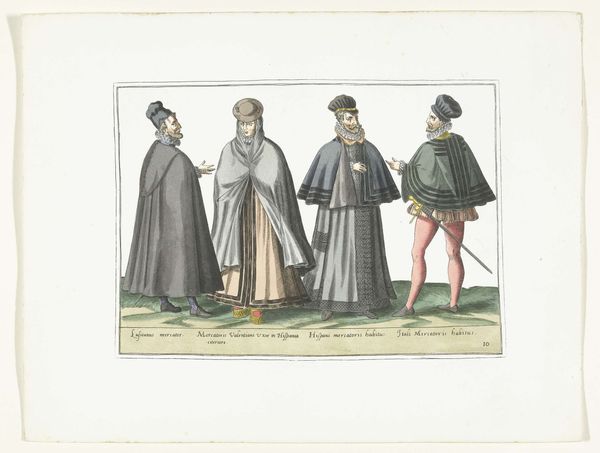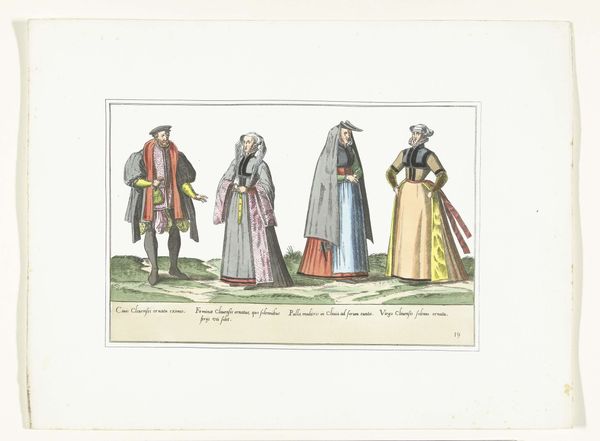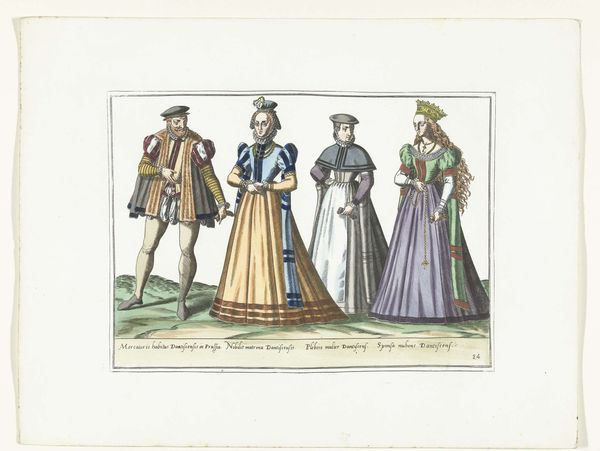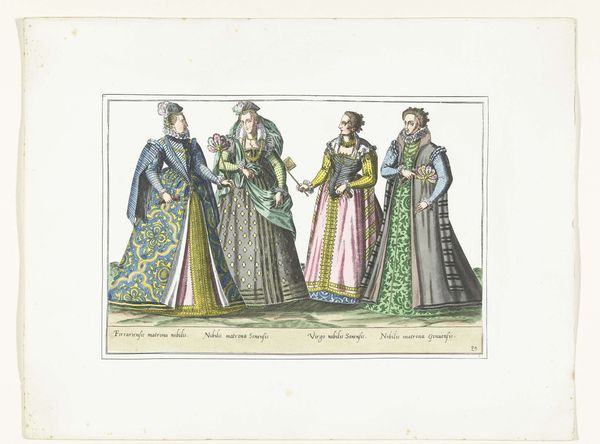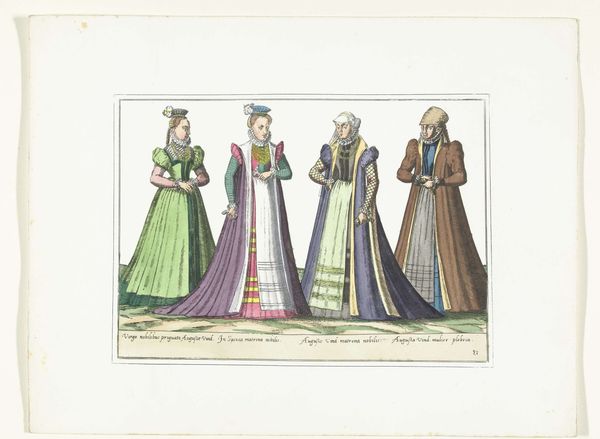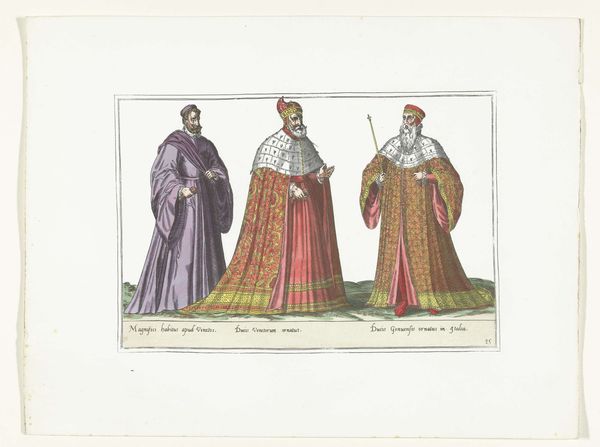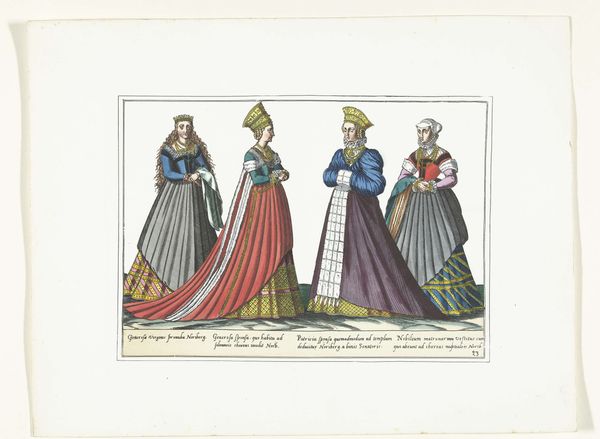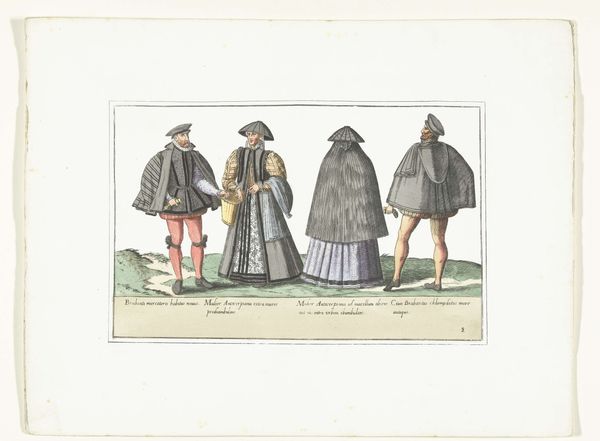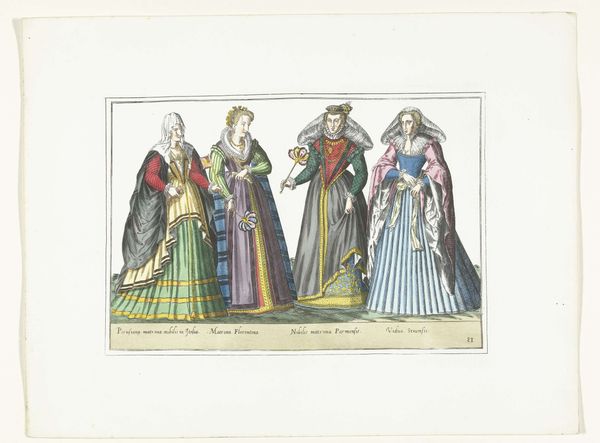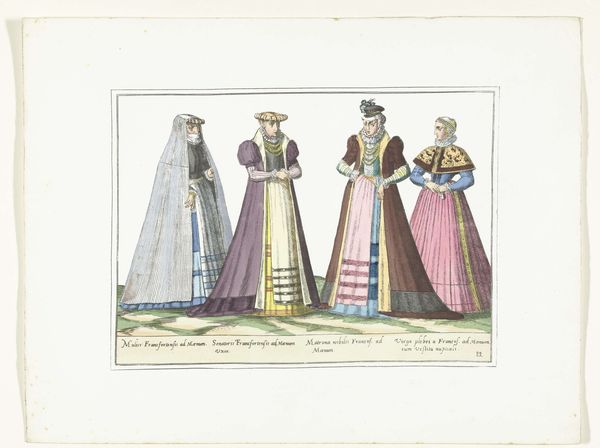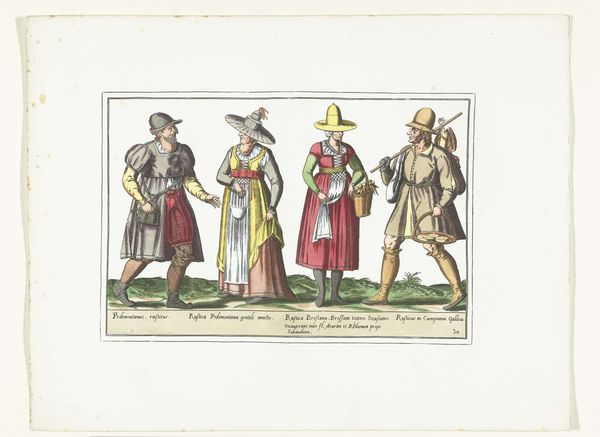
Drie vrouwen en een man gekleed volgens de Duitse mode, ca. 1580 1872 - 1875
0:00
0:00
anonymous
Rijksmuseum
Dimensions: height 274 mm, width 360 mm
Copyright: Rijks Museum: Open Domain
This engraving, circa 1580, depicts three women and a man, adorned in what was then German fashion. Note how the clothing acts as a potent signifier of identity, marking not just status but also geographical and cultural belonging. The capes worn by both men and women, for instance, echo the protective cloaks found in earlier religious art, shielding the wearer. Consider the Madonna of Mercy, where the Virgin's cloak shelters the faithful; here, the capes serve a similar function, warding off not evil but the gaze of outsiders, preserving modesty and signalling social standing. Even the colour choices, seemingly simple, vibrate with cultural weight. The shift in colour from the vibrant robes of the Renaissance to these more muted tones mirrors a broader cultural move towards restraint, a visual manifestation of evolving social mores. These are not mere garments but carriers of history, echoing through time, each fold whispering tales of cultural memory.
Comments
No comments
Be the first to comment and join the conversation on the ultimate creative platform.
